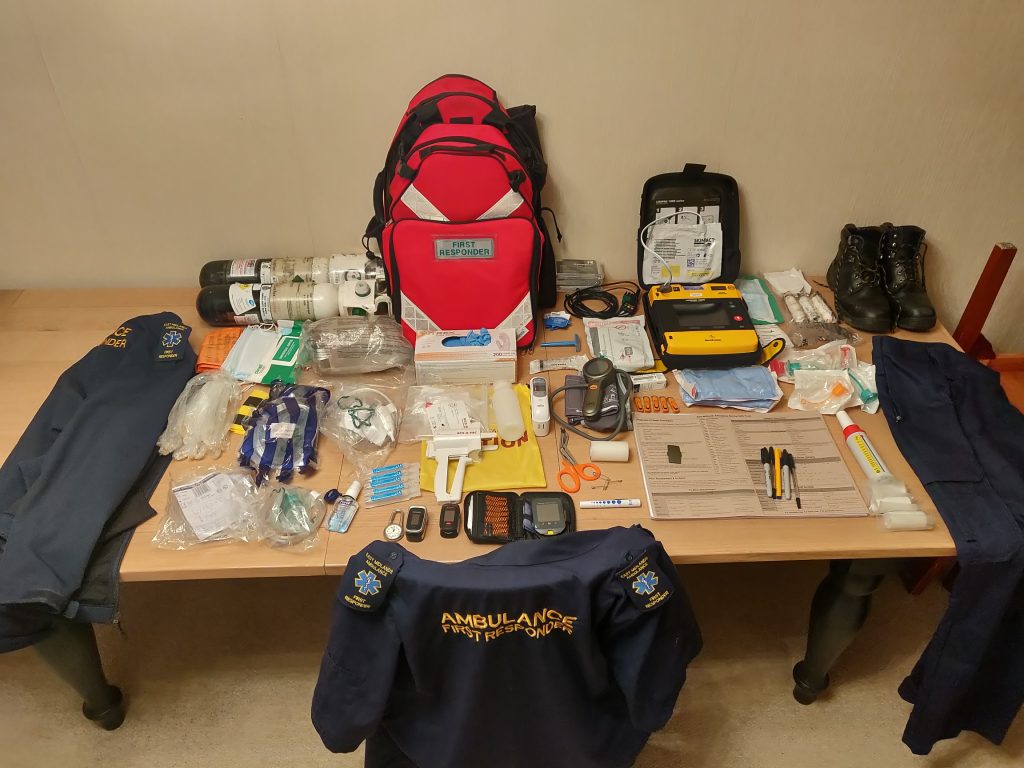
Each of our responders carries a huge volume of kit to ensure they are prepared for every eventuality. Regular training on the correct use of kit is conducted with annual requalification sessions.
Below is a list of just some of the types of equipment carried by a responder and the conditions they can be used to treat:
Automated External Defibrillator – used in the management of cardiac arrest patients.
Oropharyngeal Airways – tubes that are inserted into a patients airway, used in the management of cardiac arrest and unconscious patients
Oxygen and Masks – A range of masks used to provide different oxygen therapy techniques for patients, in cardiac arrest and treatment of patients with a range of medical conditions such as breathing problems, asthma attacks, COPD and sepsis.
Trauma Management – A range of bandages, swabs, wipes, flushes and other trauma dressings, used to treat injuries and wounds.
Suction Units – Used to clear a patients airway in the case of unconscious patients and cardiac arrest scenarios.
Observation Kit – A full range of diagnostic kit to check a patient and inform our clinical decision making. Observation kit includes pulse oximetry probes, thermometers, blood pressure cuffs, blood sugar testing kits, pen torches, peak flow metres and more.
Drugs – Our level 3 responders are authorised to carry and administer Salbutamol to patients with acute breathing problems. We are also authorised to administer a range of other drug therapies within our clinical scopes of practice.
Entonox – Our level 3 responders are authorised to carry and administer Entonox, commonly referred to as “gas and air” as pain relief for select groups of patients.
Personal Protective Equipment – Gloves, masks, aprons, sleeve protectors, goggles etc – everything needed to protect our responders when dealing with patients who have a wide range of medical issues.
We also carry a large number of ancillary equipment and spares to allow us to respond to multiple patients without the need to keep standing down to restock.
